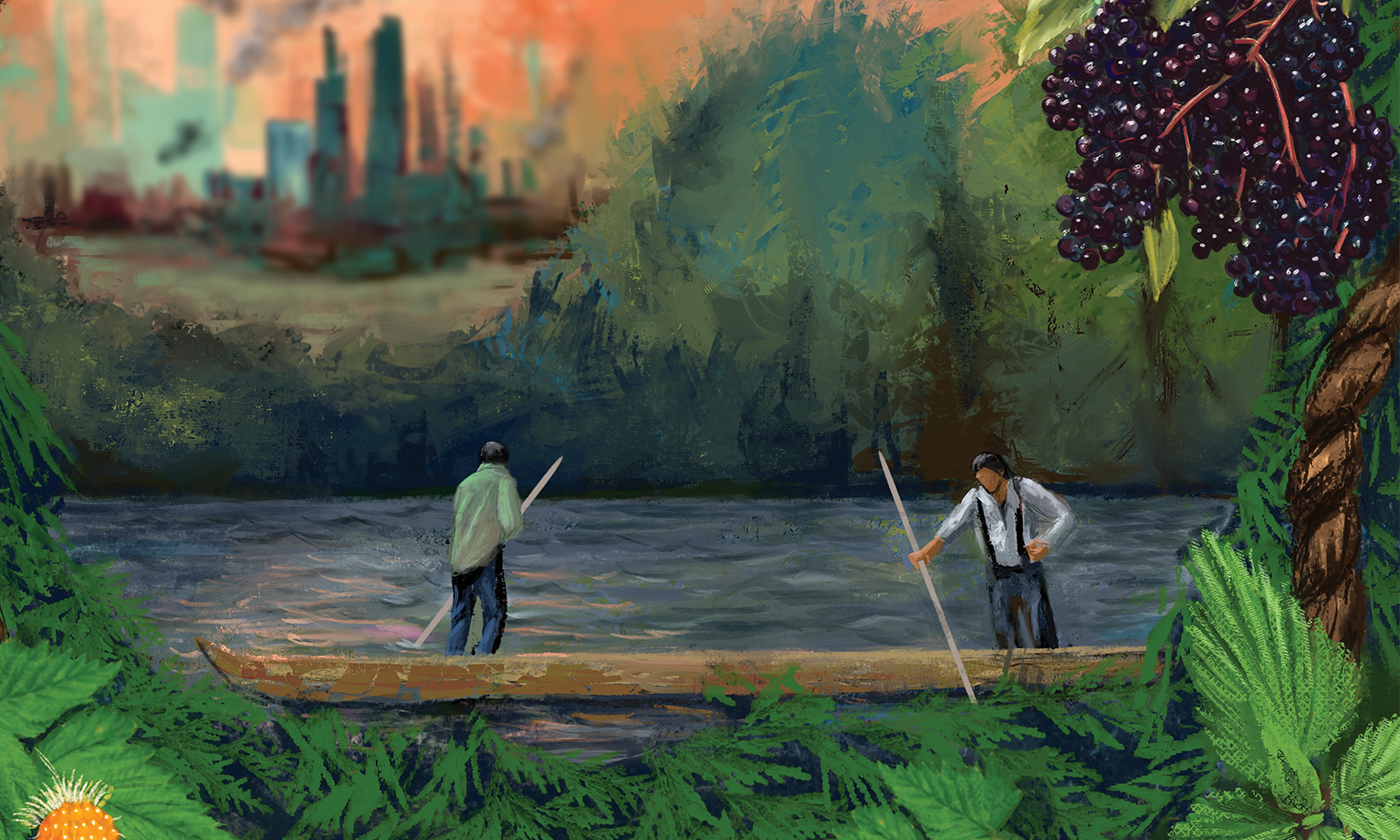Access: Solutions We Love
- Sacred Sustenance
- Share

Sacred Sustenance
Fifty years ago, the Boldt decision reaffirmed Indigenous fishing rights and recognized tribes as equal partners in resource management.
Since time began, Indigenous peoples have relied on the presence of traditional foods like salmon, berries, wild game, and plants, which have provided us with not just essential sources of nutrition but also cultural sustenance. This tasty ecological knowledge has been passed around tables and down through generations.
However, the legacy of colonialism worked to nearly sever this symbiotic relationship by imposing barriers and invisibilizing Indigenous food systems. The Stevens Treaties of 1855, for example, led to Native nations ceding millions of acres of our ancestral homelands to the United States government in exchange for rights that would protect and continue our way of life for future generations. These obligations remain the law to this day.
But these, like so many Native rights throughout history, have too often been undermined and broken. From land dispossession to environmental degradation, the obstacles Indigenous communities face in order to obtain access to traditional foods are numerous and deeply entrenched.
But so are the victories.
In the 1960s and early ’70s, numerous tribes in the Pacific Northwest led a movement to uphold treaty rights and honor our sacred responsibility to protect vital salmon populations. My mother-in-law, Georgianna “Peachie” Ungaro, spent her life as a ceremonial fisher for the Suquamish Tribe and was one of the many women who fought fearlessly during what came to be called the Fish Wars. She recalled the experience of fishing for Chinook salmon (or “king salmon”) in Elliott Bay. “When you get out on the water, you can smell the salmon,” she said. “It is a spiritually uplifting moment. And, God, I just love it. The smell always reminds us to give thanks for the salmon, and for that, we always had a good season.”
The Fish Wars represent a pivotal chapter in the history of Indigenous resistance, culminating in the 1974 Boldt decision that ruled in favor of Native rights.
This landmark case not only reaffirmed Indigenous fishing rights but also recognized tribes as equal partners in resource management. This was a watershed moment in the struggle for Indigenous sovereignty, heralding a new era of cooperation and empowerment.
The legacy of the Boldt decision extends far beyond legal victories, embodying the enduring spirit of Indigenous resilience and the interconnectedness of Indigenous rights and environmental justice. It also serves as a reminder of the ongoing struggle for food sovereignty a half-century later.
Today, as Indigenous communities address the repercussions of historical trauma and systemic oppression, the fight for food access and restoration remains as urgent as ever. As we work hard to address the barriers obstructing our vital connection to our heritage, we are fueled by the significance of our culinary traditions, the echoes of past struggles to uphold our kinship, and the ongoing commitments to strengthen food sovereignty in our communities.
Celebrating Indigenous foodways is significant and offers profound learnings, but it also requires us to confront the barriers and threats that continue to impede us from doing the restoration work we require. Environmental degradation, loss of habitat, and the erosion of our food heritage pose daunting challenges to food access and Indigenous sovereignty. Moreover, the commodification and industrialization of food have further displaced traditional Indigenous foods, exacerbating health disparities.
To address these challenges, we must embrace a holistic approach to Indigenous food sovereignty, one that recognizes the interconnectedness of land, culture, and community. This entails reclaiming ancestral lands, revitalizing traditional food systems, and fostering partnerships with allies committed to honoring sovereignty, as well as environmental and social justice. By centering Indigenous voices and experiences, we can amplify the call for systemic change and build a more just and sustainable future that truly feeds us all.

Chinook Salmon in Parchment
This cooking method locks in the salmon’s natural flavors and also pays homage to ancestral Coast Salish culinary techniques, which use various seaweeds and waxy leafed plants in place of the parchment. As Ungaro describes cooking salmon, “Their beautiful meat is dripping with good fat, and that is their medicine.”
- Preheat the oven to 400 degrees F
- Season a 4-to-6-ounce salmon fillet with salt, pepper, and garlic powder
- Lay the seasoned fish on a sheet of parchment paper large enough to fully envelop the salmon
- Add a tablespoon of water or vegetable broth to enhance moisture and flavor
- Seal the parchment paper securely, perhaps with a silent acknowledgment of gratitude
- Place the wrapped fish on a baking sheet and put into the oven
- Bake for 15 minutes. Makes one serving.
|
Valerie Segrest
(Muckleshoot) is a nutrition educator who specializes in local and traditional foods. She is co-founder and director of projects at Tahoma Peak Solutions LLC.
|

